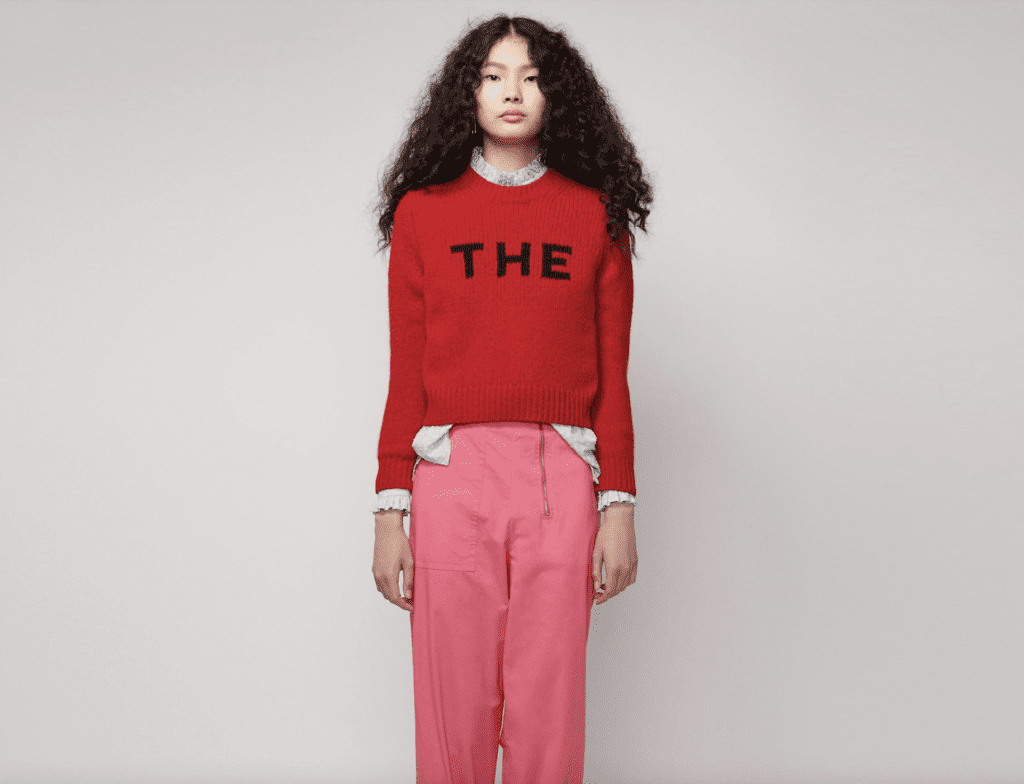Marc Jacobs and the Ohio State University have managed to settle the squabble over their respective quests to secure trademark registrations for the word “THE.” In a filing with the U.S. Patent and Trademark Office (“USPTO”)’s Trademark Trial and Appeal Board on August 18, counsel for the university sought to withdraw the opposition proceeding that it initiated this spring in furtherance of an effort to block Marc Jacobs’ trademark application for registration for the word “THE” for use on clothing and handbags. According to Ohio State University’s filing, the withdrawal of the opposition is “subject to the terms of an agreement with Marc Jacobs Trademarks, L.L.C.,” and is being withdrawn without prejudice, thereby, leaving the door open for the university to take similar action again in the future.
The agreement between Marc Jacobs and Ohio State (“OSU”) follows from ongoing settlement negotiations, which counsel for OSU alerted the Trademark Trial and Appeal Board about in a motion to suspend the proceedings on the same day that it initiated the opposition in April. At the same time, a spokesman for OSU released a statement saying that the school was “pleased to have reached an agreement with Marc Jacobs … to suspend opposition proceedings,” noting that “Marc Jacobs’ THE branded products are associated with high-end/contemporary fashion, [while OSU’s] THE branded products are associated with and sold through athletics and collegiate channels.”
Not Over Yet
While the parties may have worked out their differences, that does not mean that their marks are shoe-ins for registrations with the USPTO. Marc Jacobs’ application – which the LVMH-owned brand filed in May 2019 – has faced pushback from USPTO, with an examining attorney issuing a number of rejections (including after the brand switched its filing basis from 1(a) to 1(b) “intent to use” in June 2019). At the heart of much of that pushback: the USPTO’s stance that Jacobs’ use of “THE” is “merely a decorative or ornamental feature of [the brand’s] clothing and thus, does not function as a trademark to indicate the source of [its] clothing and to identify and distinguish” that clothing from the offerings of other brands.
On the heels of a final rejection in March 2020, Jacobs successfully filed a request for reconsideration, and the application was ultimately published for opposition in October 2020. Potentially in connection with the OSU settlement, Jacobs amended its application after publication in April 2021 to add new language to clarify the goods at play. To clearly differentiate its clothing and various types of bags from those offered by OSU, Jacobs proposed adding “all of the foregoing being promoted, distributed, and sold through channels customary to the field of contemporary fashion” to the end of the list of products cited in its application.
Meanwhile, OSU was dealt a second office action from the USPTO this month in connection with its application for “THE” for use on “clothing, namely, t-shirts, baseball caps and hats; all of the foregoing being promoted, distributed, and sold through channels customary to the field of sports and collegiate athletics.” (OSU also amended the description of its mark to specifically highlight that its offerings are not contemporary fashion ones.)
According to an August 9 office action, USPTO examiner Tara Bhupathi stated that the refusal for the application is now made final because, as the USPTO stated in prior office actions, “the applied-for mark as used on the specimen of record is merely a decorative or ornamental feature of applicant’s clothing and, thus, does not function as a trademark.” Specifically, Bhupathi asserted that when it comes to clothing, consumers may not “perceive larger designs or slogans as trademarks when such matter is prominently displayed across the front of a t-shirt.”
In this case, the examiner states that “the submitted specimen shows the applied-for mark, THE, located directly on the upper-center area of the front of the shirt and the front portion of the hat, where ornamental elements often appear,” and more than that, the mark is displayed in “a relatively large size on the clothing such that it dominates the overall appearance of the good,” which could cause consumers to perceive that mark as “merely decorative,” and thus, “as having little or no particular source-identifying significance.”
OSU pushed back against these assertions in previous responses to USPTO office actions. Despite its argument that the mark at issue is “an indicator of secondary source for other goods and services that applicant provides,” Bhupathi stated that none of the evidence provided by OSU “supports a finding that the term ‘THE’ is used as a source indicator.” Problematically, Bhupathi asserts that in order to establish that the mark acts as an indicator of secondary source, OSU needs to show that “THE” has been used alone as a source indicator for other goods or services, which has not often been the case.
With the final refusal in mind, OSU may attempt to salvage its application within the next 6 months in a few ways, including by submitting a different specimen showing use of the mark “that shows proper trademark use for the identified goods,” such as “non-ornamental use on clothing include hang tags and labels used inside a garment;” claiming acquired distinctiveness by submitting evidence that the applied-for mark has become distinctive of applicant’s goods; switching the filing basis to intent to use; submitting evidence that the applied-for mark is an indicator of secondary source; or amending its application to seek registration on the Supplemental Register instead of the Principal Register.
It remains unclear (at least to me) how either party’s existing uses of “THE” are indicative of the source of their products. As the USPTO noted in the most recent OSU office action, “The evidence and arguments provided merely show that ‘THE’ is used in conjunction with ‘OHIO STATE UNIVERSITY,” sometimes with emphasis on the ‘THE.’ Such evidence is not sufficient to show that ‘THE’ on its own, serves as a source indicator for any other goods or services.”
At the same time, while Jacobs has put the word “THE” front and center on a sweater (and potentially a few other garments and/or accessories), the majority of its offerings similarly use “THE” in connection with other words: “The Tote Bag,” for example. Beyond that, its uses of “THE” on its own, namely, front and center on a sweater, appear to be more decorative in nature based on the sizing and placement than source-indicating, which the USPTO has also previously noted. And while a mark may, in fact, be source-identifying and decorative at the same time, based on the specimens that Jacobs has produced thus far, decorative seems to be the primary (and potentially, exclusive?) use here.
UPDATED (October 5, 2021): Speaking of now easy win in sight, the USPTO sent OSU an office action in August, refusing to register the mark because it is “used on the specimen of record” – which shows the applied-for mark “located directly on the upper-center area of the front of the shirt and the front portion of the hat, where ornamental elements often appear” – merely as a “decorative or ornamental feature of applicant’s clothing and thus, does not … indicate the source of applicant’s clothing [or] identify and distinguish applicant’s clothing from others.” Counsel for OSU has not yet responded to the office action.
Meanwhile, Marc Jacobs was issued a notice of allowance for its mark from the USPTO in October, which means that the mark survived the opposition period following publication in the Official Gazette, and has consequently been allowed. However, in order to actually be registered, Jacobs now has to use the mark in commerce and submit a statement of use to the USPTO.











